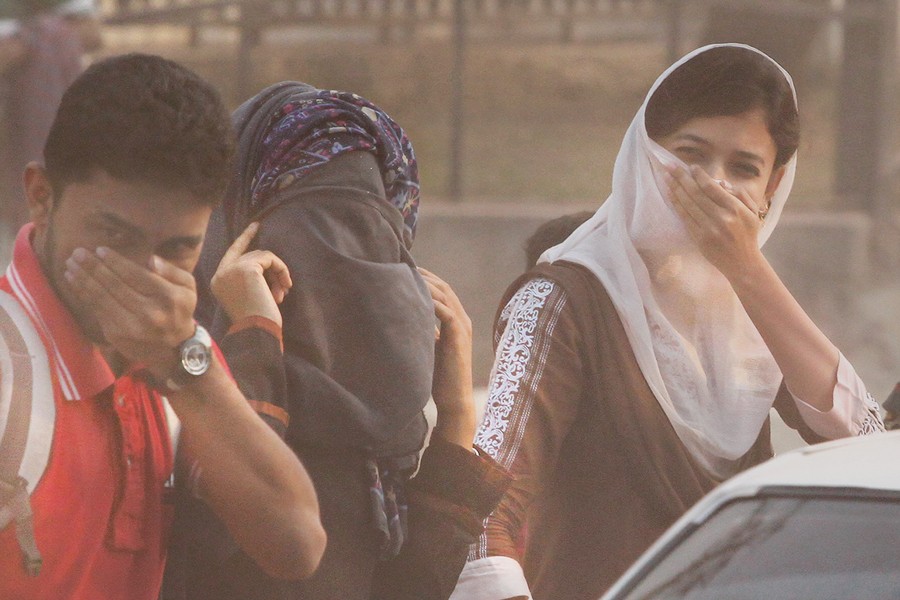Particle level in city motor vehicle areas much higher, says study

Level of particles below a certain size (PM 2.5µg/m3) in mixed and motorised areas was, on average, 182 and 272 per cent higher respectively than that of non-motorised areas, a study showed.
The level already exceeded the maximum recommended limit for 24 hours (65µg/m3) in predominantly mixed and motorised areas in 12 hours, suggesting a much higher pollution potential over a typical 24-hour period in motorised traffic areas. This is recommended in the Environmental Conservation Rules 2010.
Additionally, levels are likely underestimated as other in-depth studies have reported dry season (November to April) PM 2.5 levels being 8-13 times WHO limits.
These were disclosed in a study titled 'Motorisation of Dhaka Transport: Cost & Consequences' under 'Research for Ambient air (PM2.5) pollution in different areas of Dhaka city'. The comparative study was conducted at 12 locations in Dhaka city. WBB-Trust, Institute of Wellbeing, Stamford University, Bangladesh University of Engineering and Technology in collaboration with Global Environment Consultants Ltd (GECL Monitoring Team) conducted the study from 01-08 August this year.
The 12 spots are: B.C. Dash Street Road, Lalbagh, Kobiraj Lane, Patuatuli, Islampur Road, (Vehicle Free), Natun Rasta, Zigatola, Dhanmondi, Dhaka University campus — in front of Arts Faculty, (Predominantly Non-Motorised Transport), (Predominantly Non-Motorised Transport), Saat Masjid Road — in front of Rainbow Hospital (Mixed), Nilkhet (Mixed Intersection), Bijoy Nagar Paltan (Mixed), Suhrawardy College gate — in front of Muktijoddha Tower 1 (100 per cent Motorized Vehicle), Shahbagh Square — near Police Box area (100 per cent Motorized Intersection), Gulshan-1 (Gol Chattar) (100 per cent Motorized Intersection), Nazrul Islam Avenue, Karwan Bazar (100 per cent Motorized Intersection), Mirpur-10 (Gol Chattar) (100 per cent Motorized Vehicle).

